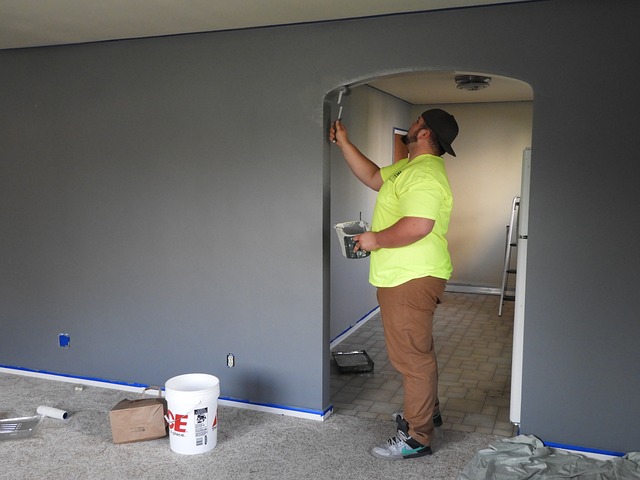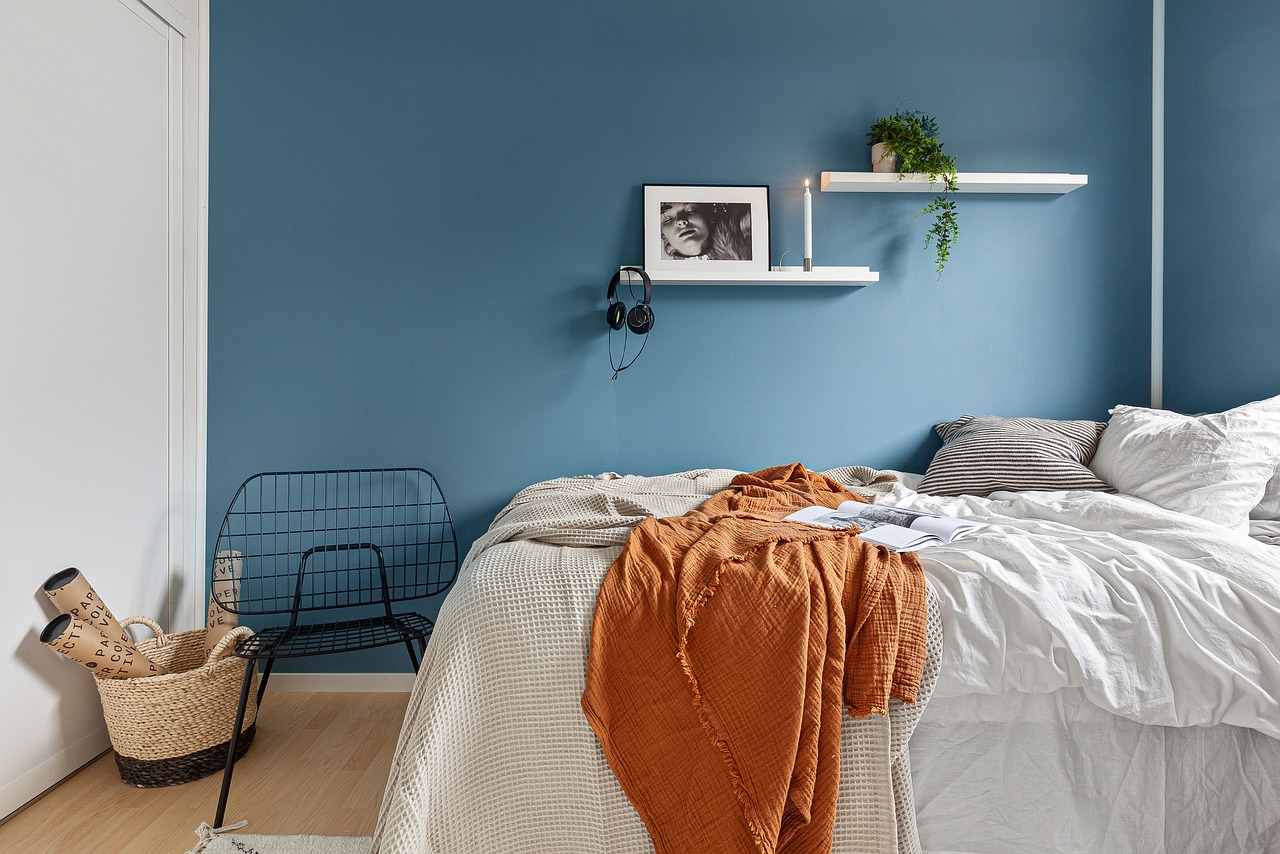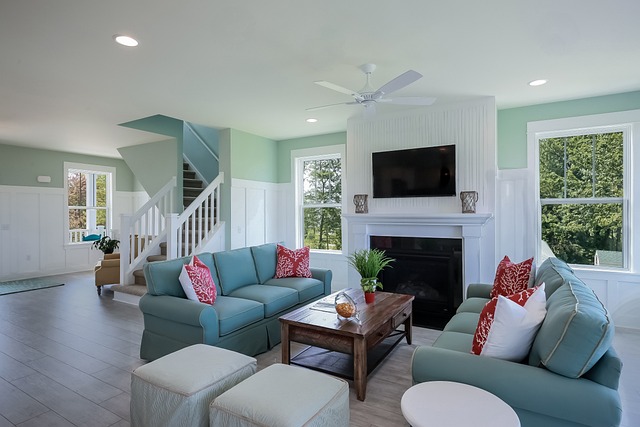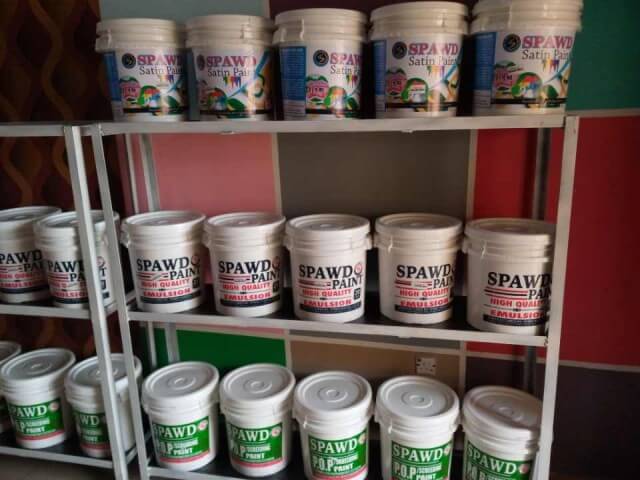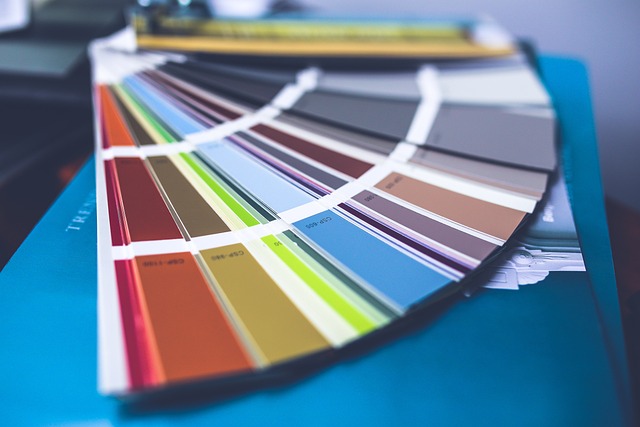As a professional painter and color consultant, have you thought of the common paint color mistakes professional painters make, and how to avoid them?
Choosing paint colors for our clients and projects is an exciting exercise that we enjoy doing.
When you choose the right paint colors, it can transform any space, creating an atmosphere that is inviting, relaxing, or energizing, depending on the mood you want to achieve.
However, when you make a mistake in your color selection, it can lead to a boring room that feels disjointed, uncomfortable, or simply unappealing to you or the client.
In this article, we’ll explore some common paint color mistakes made by beginners and even pro painters and offer tips on how to avoid them.
1. Ignoring Natural Light
One of the most common mistakes professional painters and some color consultants make when choosing paint colors is not considering how natural light affects the appearance of the color on the wall.
Some colors can be trickish and can look drastically different under various lighting conditions, such as natural daylight, incandescent lighting, or fluorescent lighting.
Best Way To Avoid This
Before you finally decide on the paint color you’ll use, please! Take out time to observe how it will look in the room at different times of the day.
Some paint stores like Dulux paint store offer small sample sizes, which you can apply to the wall in various spots to see how the color changes.
It is very important that you pay attention to how the color looks in natural daylight, as this will be the primary light source during the day.
If your room doesn’t receive or get much natural light, we advise you to consider lighter or warmer paint colors that can help brighten the space.
Note!
Using a dark color in such rooms will make the room dark and unfriendly.
2. Overlooking Undertones
For every paint color, there’s an undertone which is the subtle or complimentary lighter shade that lies beneath the main color.
For example, a beige paint color might have an undertone of pink, yellow, or gray.
Ignoring these undertones can lead to a color clashing with your furniture, flooring, or decor.
How to Avoid It
When selecting a paint color, always ask to look at the color chart in different lighting to identify the right undertones.
This is very helpful, it will enable you to compare the color chart to other colors in your home, such as your sofas, carpets, curtains, or wood finishes, to ensure they complement each other.
You can also place the color chart against a white background to make the undertone more visible.
3. Choosing Too Bold Color
Bold colors are actually important for contrast, they can add beauty to a room, but again, can also be overwhelming if not used correctly.
So, choosing a color that’s too intense for your space or project can make the room feel small, and dark.
How best to Avoid this mistake
If you are someone who likes bold colors, we advise you to consider using them as a complementary color rather than the primary color.
You can paint one wall with a bold shade while keeping the other walls lighter or neutral.
Alternatively, you can incorporate bold colors to suit your home’s accessories like cushions, artwork, or your rugs.
But If you decide to use a bold color on all your walls, make sure the room has plenty of natural light, large windows, and use light-colored furnishings to balance the intensity.
4. Painting Without Testing Color First
This is a common paint color mistake among painters.
Many professional painters and decorators make the mistake of choosing a paint color based on a photo they see online without testing it in their own space.
I’ve had a personal experience with this.
A client saw a photo online and wanted the same color, we got the same color but after applying it to the wall, we were all disappointed at the end result.
Colors gotten from photos online can sometimes look very different when applied to the wall.
This Is how to avoid it
Before you start your painting properly, always test paint colors in your space first, allow it to dry and make sure it gives you the desired color before making a final decision.
Take out some time to observe how the color looks at different times of the day and under various lighting conditions.
If you’re unsure about committing to the shade of color you get, consider painting a large carton board with the sample and move it around the room to see how it looks in different areas.
5. Ignoring the Purpose of the Room or Space
The function of the room or space you are going to paint should play a significant role in your color selection.
Unfortunately, so many professional painters often overlook this step.
A color that works well in a bedroom might not be suitable for a kitchen.
Additionally, a color that will suit a recording studio may not go well in offices or restaurants.
How you can avoid this
Before choosing paint colors for your project, first, consider the purpose of the room or space.
For example, bedrooms are spaces for relaxation, so the most soothing colors for these places are soft colors like blues, greens, or neutrals.
Although, you can have another alternative based on choice.
Kitchens, on the other hand, go well with brighter colors, and more energetic colors like warm yellows, warm whites, or even muted reds or gray.
In office areas, we advise you to opt for a color that promotes focus, such as a soft gray, sage green, light blue or warm white.
6. Painting Small Room or Space with Dark Colors
Painting a small room or space with a dark color all through is not advisable because it will make the place look smaller and confined.
How to Avoid it
If you’re working on a small space, we advise you to go for lighter colors that can make the room or space feel larger and more open.
What if you love dark colors?
Don’t worry!
You can consider using them in larger rooms or as a complimentary color on a smaller wall in the room.
Alternatively, you can use dark colors on one wall or below a chair rail, with a complimenting light color above to create a balanced and visually beautiful look.
7. Forgetting About the Ceiling
This is one common paint color mistake by painters.
I have seen many professional painters default to painting their ceilings with white paint, which in our own opinion isn’t always the best choice.
A brilliant white ceiling can sometimes feel disconnected from the rest of the room, especially if the walls are a warm or dark color.
How to Avoid this
You should consider painting part of the ceiling with a color that complements the walls.
If your room or the space you will paint has high ceilings, painting some part of the ceiling with dark color can make the space feel more intimate and beautiful.
Note that,
Conversely, a lighter colored ceiling can make a low ceiling feel higher.
8. Using Too Many Colors
Using too many colors in a single room can make the room look too busy and disjointed.
It’s easy to get carried away with different colors for walls, trim, and accents, but this can lead to lack of calmness and cohesion.
How You can Avoid it
Stick to a simple choice of color shade for each room.
Let me give you a good rule to always follow when painting.
A good rule of thumb is the 60-30-10 rule.
60% of the room should be a dominant color (usually the major walls), 30% a secondary color to compliment your (furniture and textiles), and 10% of accent color (decorative items).
This approach will help you create a balanced and harmonious look.
In case you want to introduce more colors, you can achieve that subtly through accessories like throw pillows, artwork, or your area rugs.
9. Ignoring Personal Style
Following trends or choosing colors based on what’s popular at the moment can lead to a room that doesn’t reflect your style or make you feel comfortable.
Best Way To Avoid it
While it’s fine to draw inspiration from current trends, always consider your personal taste and how you want to feel in your space.
Choose colors that resonate with you and that you’ll enjoy living with for years to come.
If you’re unsure about committing to any trendy color, the best thing to do is to incorporate it in smaller doses through your accessories or as an accent wall rather than painting an entire room.
10. Underestimating the Impact of Finish
The finish of the paint you use can have a significant impact on how the color looks and performs on your walls.
For example,
A flat finish might not be the best choice for high-traffic areas, while a high-gloss finish might be too shiny for large surfaces.
Again, some colors look totally different in emulsion paint compared to the same color in silk or gloss paint.
How to Avoid it
Consider the function of the room when choosing a paint finish.
Flat or matte finishes work well in low-traffic areas like bedrooms or ceilings, where you want a soft, non-reflective surface.
Meanwhile, Eggshell or satin finishes are more durable and easier to clean, making them ideal for living rooms, dining rooms, and hallways.
Semi-gloss and gloss finishes are also highly durable and resistant to moisture, making them perfect for kitchens, bathrooms, and trim work.
Keep it in mind that glossier finishes highlight imperfections on the wall, so ensure the surface is smooth and well sanded before applying your paint.
11. Skipping Primer
Primer is very important in painting when you desire to achieve a top-notch finish.
Skipping the use of primer to save time or money can lead to uneven color, poor adhesion, and a less durable finish.
It helps to cover little errors on the wall and improve the adhesion of your paint, so it’s necessary to use it.
How to Avoid this
Always use a primer, especially when painting over a dark color with a lighter one, or when painting new drywall.
Primer helps the paint adhere better to the surface, it ensures even coverage, and can also enhance the true color of the paint.
Some paints like Dulux come with built-in primer, which can be a good option for certain projects, but a separate primer is often more effective for achieving the best results.
Advice!
Always use primer for a professional paint finish.
Conclusion
Choosing the right paint color can transform your space, but it’s important to avoid common color mistakes that can lead to disappointing results.
By considering the above listed factors, and how colors interact with each other, you can select colors that create the atmosphere you want and enhance the beauty of your home and space.
Take your time when choosing paint colors, and don’t be afraid to seek advice from professionals if needed.
With careful planning and attention to details, you can avoid these common pitfalls and create a space that’s both beautiful and functional.
Hope this article was helpful.














